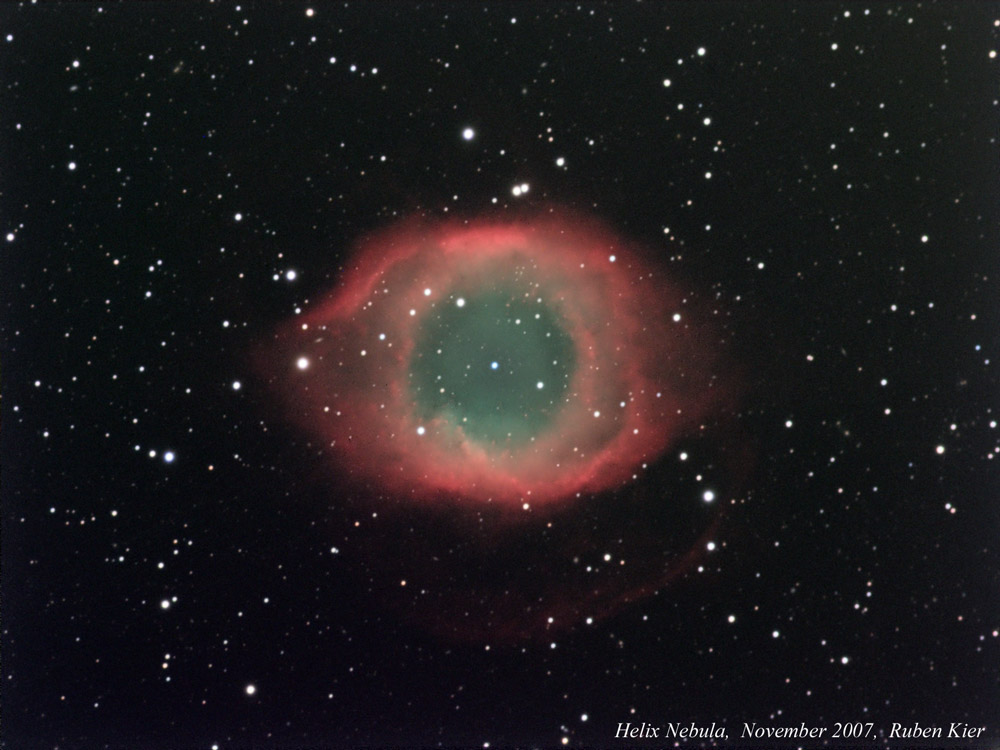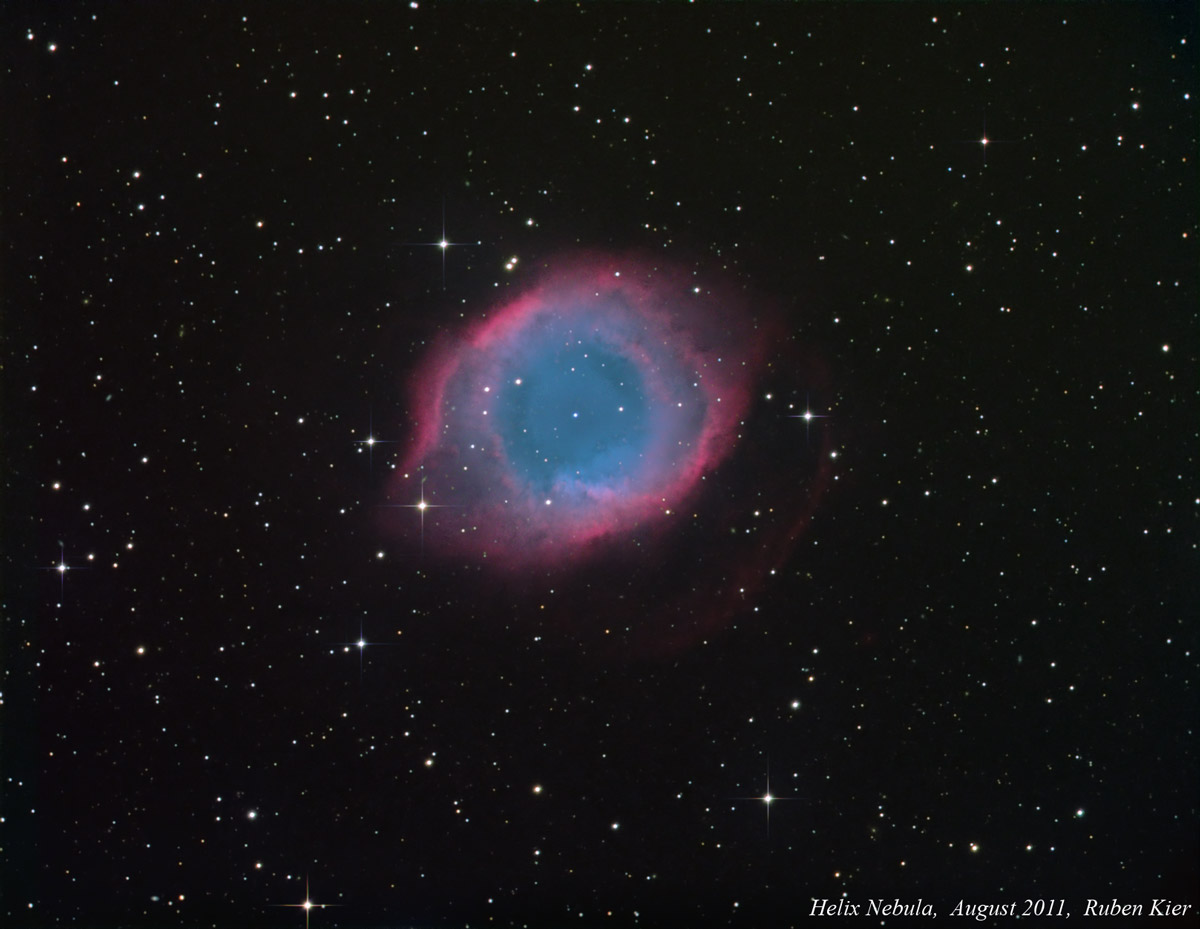| Helix Nebula |
The Helix Nebula, in the constellation Aquarius, surrounds a dying star that has blown off its outer layers, once its central supply of hydrogen is nearly exhausted. The remnant central star is a
dense "white dwarf" that can no longer support nuclear reactions. At a distance of 450 light years, it is the closest planetary nebula to earth. The very hot white dwarf ionizes an inner shell of
oxygen, which appears green in this image, and an outer shell of hydrogen, which appears red. These detailed image taken under dark skies also show a faint outer rim of gas, which can also be
seen an images taken through the Anglo-Australian Observatory at http://www.aao.gov.au/images/captions/aat015.html.
The image above combined 88 minutes red, 80 minutes green, and 84 minutes blue exposures with a QSI-583wsg camera through an Astro-Physics 12" Ricardi-Honders Astrograph.
The image immediately below combined 220 minutes of luminance exposures with a clear filter with 100 minutes of red, 100 minutes of green, and 50 minutes of blue exposures. I used an
ST2000XM camera through a TEC refractor at the Hidden Lake Observatory.
The image at the bottom combined 2 hours luminance exposures using the IDAS filter with 30 minutes of green and 40 minutes red and 45 minutes of blue exposures. An ST10XME camera
was used through the same TEC 140mm refractor at my observatory.
dense "white dwarf" that can no longer support nuclear reactions. At a distance of 450 light years, it is the closest planetary nebula to earth. The very hot white dwarf ionizes an inner shell of
oxygen, which appears green in this image, and an outer shell of hydrogen, which appears red. These detailed image taken under dark skies also show a faint outer rim of gas, which can also be
seen an images taken through the Anglo-Australian Observatory at http://www.aao.gov.au/images/captions/aat015.html.
The image above combined 88 minutes red, 80 minutes green, and 84 minutes blue exposures with a QSI-583wsg camera through an Astro-Physics 12" Ricardi-Honders Astrograph.
The image immediately below combined 220 minutes of luminance exposures with a clear filter with 100 minutes of red, 100 minutes of green, and 50 minutes of blue exposures. I used an
ST2000XM camera through a TEC refractor at the Hidden Lake Observatory.
The image at the bottom combined 2 hours luminance exposures using the IDAS filter with 30 minutes of green and 40 minutes red and 45 minutes of blue exposures. An ST10XME camera
was used through the same TEC 140mm refractor at my observatory.
Music: Age of Aquarius


